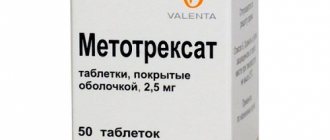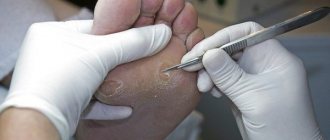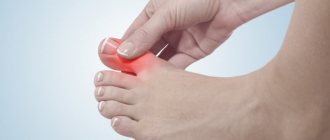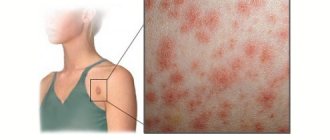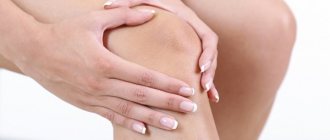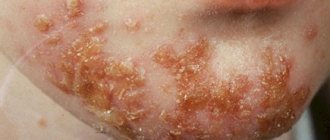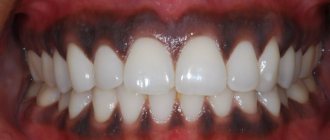A pathology such as arthritis of the joints of the foot is very common among the population and represents a whole group of pathological conditions that are united by inflammatory lesions of the joints of the tarsus, metatarsus and phalanges of the toes.
This disease causes great discomfort due to pain and inflammation in the joints of the foot. It is not easy to fight it, since patients often turn to a doctor when the disease no longer allows them to live in peace, that is, when it has already acquired a chronic form.
Therefore, every person, especially people over 35 years of age, should know the causes of this disease, the symptoms of its manifestation, and also have information about whether it is possible to reduce pain at home when arthritis of the toes has made itself felt.
Causes
Why does foot arthritis occur and what is it? Arthritis of the foot is a disease that causes changes in the synovial fluid and inflammatory processes in the joints. As a result of arthritis, the amount of synovial fluid increases several times, so tumors can form. As for the inflammatory process, it can be caused either by external infection in case of injury or by internal influence.
The development of the inflammatory process can be provoked by many reasons, however, most often this pathology affects the joints due to the following factors:
- Gout. Is the excretion of uric acid impaired due to this pathology? and also salt deposition occurs in the joints
- Rheumatoid arthritis. It is an autoimmune disease. It progresses after the human immune system begins to mistake cells located in the cartilage tissue as foreign.
- Osteoarthritis. Appears due to the onset of a secondary degenerative inflammatory process, in which the cartilage joint is destroyed.
- Reactive arthritis. As a rule, it is formed exclusively after suffering from any infectious diseases.
- Post-traumatic and infectious forms of arthritis. Occurs after injury or infection.
Depending on the cause and severity of symptoms of foot arthritis, a treatment regimen is determined.
Classification of the disease
Like any other pathology of the musculoskeletal system, arthrosis of the leg joints develops in several stages:
- At first, minor pain appears in the area of the feet. With physical activity they intensify, the patient notices that he begins to get tired quickly.
- Arthrosis of the second degree is accompanied by increased discomfort, a feeling of stiffness in the joints is added, and small nodules are found in the area of deformed joints.
- At the last stage of the disease, the change in the shape of the joint becomes pronounced, and motor reflexes are almost completely absent.
Osteoarthritis of the foot affects the cartilage that protects the bone surfaces. Fabrics lose elasticity, begin to deteriorate, and their shock-absorbing properties deteriorate.
Due to constant external impacts, bone surfaces experience high loads. Thinning cartilage contributes to impaired blood supply to tissues and the appearance of bone growths.
The severity of the pathological process is aggravated by the curvature of the fingers and their immobility. This form of arthrosis is difficult to treat.
Bursitis, arthritis and synovitis may develop against the background of this disease.
Advanced arthrosis of the foot joints completely immobilizes the leg, making the person unable to work. In some cases, pathological changes become irreversible.
Arthritis comes in the following types:
Rheumatoid foot disease
Rheumatoid arthritis is an autoimmune disease that can cause chronic inflammation of the joints, especially in the legs.
Symptoms of rheumatoid arthritis
Rheumatoid arthritis has the following symptoms:
- There is swelling and inflammation in the legs;
- The patient feels tired legs;
- There is a general loss of energy, loss of appetite, low-grade fever;
- The muscles and joints of the legs hurt, making it difficult to move them;
- Rheumatoid arthritis differs from other types of the disease in that it affects the joints of the legs symmetrically;
- A person's gait changes due to limping when walking.
Symptoms of Foot Arthritis
As a rule, arthritis of the foot, regardless of the cause, has similar symptoms, but in each case it is possible to additionally identify some features that are inherent in a particular type of disease.
In this regard, a full diagnosis of arthritis should be carried out by a rheumatologist, since this requires a large list of additional diagnostic methods. Well, the patient at home has enough general signs to suspect a problem and seek medical help.
Therefore, here are the common symptoms of foot arthritis:
- pain when walking;
- swelling and increased local temperature in the area of the affected joint;
- restriction of normal mobility;
- deformation of the foot itself;
- general malaise.
Early signs of foot arthritis are associated with the accumulation of fluid in the joint cavity, resulting in damage to the surrounding soft tissue. At first, the fluid will be serous; if infection or trauma occurs, there may be accumulations of pus or blood.
Folk remedies
Treatment with folk remedies has varying effectiveness for different types of arthritis.
For rheumatoid arthritis, it is recommended to use the following recipes:
You can alleviate the patient’s condition if you use traditional medicine recipes at home. Doctors have a positive attitude towards such methods in the complex treatment of arthrosis. Popular:
Treatment of foot arthritis
If foot arthritis develops, treatment is simply necessary and is aimed primarily at reducing symptoms, eliminating inflammatory processes and restoring damaged areas. That is why it is complex and consists of several components.
First of all, this is drug treatment, which includes the following drugs:
- Non-steroidal anti-inflammatory drugs - reduce the intensity of pain and eliminate inflammation.
- Chondroprotectors - help prevent the destruction of cartilage, and, at the same time, contribute to its restoration.
- Antibiotics - they are prescribed when the cause of an infectious nature is established.
Supportive treatments include:
- puncture of the affected joint;
- physiotherapy;
- therapeutic exercises;
- diet rich in vitamin E
- special orthopedic devices;
- sanatorium-resort recovery, mud therapy.
- surgical treatment methods.
The end result of a set of therapeutic measures is always the restoration of the function of the sore leg. Treatment for foot arthritis includes:
- elimination of the inflammatory process (general or local);
- changes in the body's immunological reactivity;
- restoration of function of the foot joints;
- treatment of the underlying disease (if it is the cause of arthritis).
Medicines for arthritis include non-steroidal anti-inflammatory drugs (NSAIDs), chondroprotectors, and antibiotics. NSAIDs (Indomethacin, Ibuprofen, salicylates) inhibit inflammation, and with it fever, pain and swelling. For various forms of foot arthritis, the administration of oral, parenteral and local forms of NSAIDs, which have an anti-inflammatory and analgesic effect, is indicated. If the infectious nature of foot arthritis is established, antibiotics are prescribed.
As a supplement, you can recommend some folk remedies, but we must remember that this is not a panacea and the use of these remedies alone, of course, will not cause harm, but can only trigger the disease.
- At home, pine decoctions, applications of mustard plasters, and compresses of crushed horseradish, turnip and radish roots are used to warm joints.
- For joint pain, an ointment is prepared from honey and mumiyo. Take 100 grams of honey and 0.5 grams of mumiyo, mix everything. The wraps are done at night, and the composition is also taken internally. This continues for 10 days with a break of three days. It will take 2-3 courses.
A diet for arthritis is most often needed by patients with gout. They need food that does not contain purines. These are porridges made from whole grains (millet is especially good), vegetables (with the exception of sorrel and rhubarb), fruits, and herbs. Offal, herring, smoked meats, lard, sharp and aged cheeses, and alcohol are strictly prohibited (it can provoke new attacks of gout). A diet for arthritis involves drinking plenty of good quality water and green tea.
Modern treatment
If you notice symptoms of arthritis, you should immediately consult a doctor. It is worth saying that how to cure foot arthritis is known only to a small circle of specialists. That is why, before the doctor makes a diagnosis, appropriate tests are taken.
- In order to relieve autoimmune inflammation, specialists often prescribe hormonal drugs in combination with non-steroidal anti-inflammatory drugs. These drugs are in most cases injected directly into the affected joint area. After the injection, the patient experienced a significant improvement in well-being.
- Exacerbation of gout is alleviated by neutralizing and removing excess uric acid from the human body.
- Antibiotics for foot arthritis are prescribed if the disease has an infectious form.
It doesn’t matter what form the arthritis has. In any case, you must follow all instructions prescribed by your doctor. A diet for arthritis is an excellent solution, because treatment must be comprehensive.
Our readers have found an effective treatment for arthritis - Anthropant. By following this link you can read the story of our reader, who got rid of arthritis in one month using Anthropant. Read the story. Opinion of a professor of Chinese traditional medicine.
Gymnastics
Treatment of arthritis of the toes is not complete without exercise therapy. You can do the following exercises at home:
- Having taken a comfortable position, rhythmically and quickly clench and unclench your toes (at least 20 times).
- Holding your foot with your hands, alternately bend and straighten your toes; perform stretching and circular movements with your fingers.
- Roll a ball or dumbbell on the floor with your foot for 5-10 minutes.
- Standing on small stones or peas, shift from foot to foot.
- Arch the back of your foot and bend it back.
- Slowly rise onto your toes and lower onto your heels (15-20 times).
Physical procedures (magnet, diadynamic, amplipulse, paraffin treatment) are carried out in conjunction with physical therapy classes. These measures are carried out only in the remission (quiescence) phase of arthritis. Initially, the load on the foot is minimal and is carried out only in a lying position. Then the complexity of the exercises increases, and the patient is asked to walk with characteristic foot rolls from heel to toe and back.
Preventing leg arthritis
People suffering from arthrosis of the feet should wear loose, comfortable shoes that do not impede the movement of their feet. Shoes should have flexible soles and good shock-absorbing properties.
In summer, it is recommended to walk barefoot on the grass. The patient must eat properly and control his weight.
Special exercises prevent the development of diseases such as arthritis and arthrosis.
You should not wait for the pathological process to enter the final stage; treatment in this case becomes impossible.
How to treat arthrosis of the foot at home?
Remember! The sooner treatment for leg arthritis is started, the faster the disease will be overcome without consequences and complications. To prevent foot diseases, it is important to follow these recommendations:
- Lead an active lifestyle;
- Get rid of bad habits;
- Watch your weight;
- Temper your feet by pouring cool water over them;
- Try to eat a balanced diet and only those foods that are rich in fatty acids, calcium, vitamins and microelements;
- Move enough and optimally load your legs;
- For preventative purposes, do a leg-strengthening therapeutic massage at least once a year.
Prevention
For foot arthritis, prevention consists of the following simple rules:
- carefully monitor the condition of your feet and use comfortable shoes;
- protect your legs from various injuries and stresses;
- fully treat chronic diseases;
- monitor body weight, where a special diet will help;
- pay attention to the condition of the kidneys;
- carry out special therapeutic exercises;
- no smoking.
At the same time, patients are recommended to regularly perform therapeutic exercises, reduce the load on the joints of the foot, make nutritional corrections, and, with the permission of the attending physician, use certain methods of traditional medicine.
Forecast
For the treatment of foot arthritis, the prognosis depends on the degree of neglect of the disease, as well as the correctness of the chosen course of treatment. If it was possible to start treatment in a timely manner, the prognosis is generally favorable. If the joints are severely inflamed and a serious deformity of the feet has developed, then the treatment will be very painful and may not lead to the desired effect - there is a risk of lameness, gait disturbance and even disability.
Arthritis of the foot, symptoms and treatment (photos) will need to be known to every person who is faced with such a problem. This disease is caused by inflammation of the joints and then affects the joints of the bones. To conduct effective therapy, it is necessary to understand the symptoms of the disease and effective treatment methods.
Diet and physiotherapy
Treating foot arthritis at home involves following a special diet. Violation of the acid-base balance in the body leads to the progression of the disease, therefore the following foods should be excluded from the diet:
- liver, heart and other meat by-products;
- peas, beans, beans;
- rhubarb, sorrel;
- fatty meats;
- conservation;
- smoked meats;
- sweets;
- alcohol.
It is useful for arthritis to eat fresh fruits, vegetables and herbs. These products have a beneficial effect on alkalization of the body and regulate acid balance. Sugar can be replaced with honey if necessary.
Arthritis of the foot, the treatment of which has already been completed, requires recovery. The best option for this is physiotherapy. Doctors recommend using the following methods:
- electrophoresis;
- paraffin therapy;
- mud baths;
- magnetic therapy;
- UHF.
Such physiotherapeutic procedures should be completed in courses. They promote a speedy recovery, prevent recurrence of the disease and reduce pain.
Signs of the disease
Arthritis of the foot can be determined based on the reasons that triggered the inflammatory processes in the joints. The main signs of the disease are:
- The appearance of pain that is localized in the affected area. Initially, the discomfort is minor. Every day the disease can progress, and accordingly, the pain will intensify. Sometimes you will even need to take pills to relieve discomfort.
- Redness of the skin, swelling of the foot. This is accompanied by unbearable pain, but sometimes such symptoms can disappear abruptly. This phenomenon does not at all mean the end of the disease; most likely, the patient begins the remission stage. After 7 - 10 days, foot arthritis will return with greater force.
- The appearance of joint stiffness and stiffness. This is especially common in the morning, after a long period of calm. A person may feel like they are wearing tight shoes.
- Violation of the shape of the joints. This sign is the most dangerous, as it leads to the appearance of growths and bumps, and twisting of the phalanges. The most well-known symptom is the formation of a bunion on the big toe.
In addition, signs of arthritis of the foot are accompanied by a local increase in temperature, general malaise, difficulty and fatigue when walking. A person may feel significant changes occurring in their feet.
If the patient has arthritis of the foot, the symptoms indicate this, then you need to choose the appropriate type of treatment. After the first signs of the disease appear, you should immediately consult a doctor for qualified help.
General signs
- Painful sensations. Whatever the form of arthritis, this disease always goes away with pain. Pain sensations can be of a different nature: periodic pain or constant pain. If arthritis is in an advanced stage, then joint pain will occur on an ongoing basis.
- The appearance of the joint changes over time. With arthritis of the small joints of the foot, the leg becomes deformed. Bumps often appear on the toes, and the limbs also swell very often. All of the above leads to the fact that the outflow of fluid from the synovial membrane is disrupted, and thereby the joint is deformed.
- The functioning of the joints is impaired. The joints become less mobile, stiffness and stiffness appear in the legs. Perhaps the reason lies in the fact that osteophytes have begun to grow, or bone growths have formed.
- Quite loud and pronounced crunching in the joints. In most cases, when interviewing patients, they point to this symptom. And the whole point is that synovial fluid is no longer produced in normal quantities, as a result of which dryness occurs between them, and, of course, when moving, a person hears a characteristic click and crunch.
- Arthritis of the small joints of the foot is always expressed symmetrically.
- Redness appears on the skin.
- Joints become deformed over time. This occurs due to the appearance of ankylosis, subluxation and osteophytes. At this stage, the toes suffer from valgus deformity.
Medical therapy
Rheumatoid arthritis of the foot is treated with nonsteroidal anti-inflammatory drugs (NSAIDs). Such drugs include:
These substances help suppress inflammation, relieve fever, swelling and pain. If there is a large amount of fluid and pus in the area of the affected joints, then a puncture cannot be avoided. To perform the treatment procedure, it is necessary to inject steroid hormones (Dexamethasone and Kenalog) into the joint cavity. In addition, foot arthritis can be treated with antibacterial agents prescribed by an experienced specialist. At the recovery stage, chondroprotectors are prescribed, because such substances regenerate damaged intra-articular cartilage.
Note that in some cases it will be necessary to resort to surgical intervention - endoprosthetics. This method can lead to some complications, so only an experienced doctor should prescribe this type of treatment. It is best to carry out therapy in the early stages of the disease so as not to resort to endoprosthetics.
How is arthritis of the small joints of the foot diagnosed?
Be sure to remember that the sooner the cause of pain is identified, the better. Plus, if you recognize arthritis in the early stages and begin to treat it in a timely manner, the recovery process will go much faster. But, unfortunately, most patients are negligent about their pain and expect that everything will go away on its own soon. The consequence of this attitude is that the disease eventually becomes chronic.
Naturally, during diagnosis it is possible to accurately determine whether the patient has arthritis, and, if so, at what stage and what type it is. Based on the diagnosis received, the doctor will be able to prescribe appropriate treatment for the patient.
First, the doctor will ask about previous diseases, then prescribe blood and hormonal tests. X-rays also play an important role in diagnosing arthritis. It is through this that one can easily establish what exact form the disease has.
Traditional therapy
Heel arthritis can be treated in a large number of ways that have been known since ancient times.
- An effective method is to use a decoction of bay leaves. To prepare it, you need to take a pack of this spice, put half in a saucepan, pour the contents with 250 ml of water and boil for 5 minutes. Then you need to wrap the container with a cloth and leave for 4 hours. After the specified time has passed, it is necessary to strain the broth and take it before bed for 3 days. You should absolutely not drink yesterday’s drink; you should use only a fresh preparation. To enhance the effect, the course should be repeated after a week.
- For internal use, it is recommended to drink lingonberry or currant tea. To prepare, you will need to take berries and leaves, brew them with boiling water and take 4-5 tbsp 3 times a day. l. This drug strengthens the immune system, making the body more likely to cope with the disease.
- Arthritis of the foot joints can be treated with banana peel tincture. You need to take the skins of 6 - 7 fruits, fill them with 0.75 liters of alcohol and place them in a dark room for 15 days. When the liquid is infused, it should be filtered and then used to rub the affected areas.
- To relieve inflammation in the joints, it is recommended to use cabbage leaves. To do this, you need to take this part of the vegetable, spread it with honey and apply it to the sore area. Then you need to wrap it with cotton cloth and leave it for 10-12 hours (preferably overnight).
- To cure arthritis, traditional medicine advises using ointment from birch buds. To prepare the product, you need to take 500 g of this substance, pour 1 liter of vegetable oil into it, place the mixture in a glass or clay container, seal it and put it in the oven for a day. After this, you need to rub the preparation through a sieve, and also add a pinch of camphor powder. This ointment should be rubbed on the affected joints. The mass must be stored in a refrigeration device.
- Ice applied to the sore spot will help relieve foot inflammation and reduce swelling. If you are prone to colds, then this therapy cannot be carried out daily.
- Another preparation can be prepared from turnips, horseradish, radishes (the components are taken in 100 g each). The ingredients are grated, mixed and made into a compress. The course of therapy is 7 days.
- To cure arthritis of the small joints of the foot, a remedy is prepared from honey and mumiyo. You need to take 100 g of beekeeping product, mix it with 0.5 g of a medical substance. The drug is used externally - compresses are made from it, and 0.2 g is also taken orally in the morning 1 hour before meals. Therapy lasts for 10 days, but with a break of 3 days. To completely get rid of the disease, 3-4 courses of treatment are required.
- To prepare another preparation, you need to take 100 g of vodka and turpentine, add 3 tbsp. l. sunflower oil. Before going to bed, you need to apply the mixture to the affected joints, and attach plastic wrap and a woolen scarf on top. The next morning you should remove the compress. It is recommended to conduct sessions of such therapy for 6 days.
- It is possible to treat foot arthritis with the help of propolis. You need to take 100 g of such a beekeeping product, pour 150 g of vegetable oil into it, and place in a water bath for 25 - 35 minutes. The mixture must be stirred constantly until the propolis is completely dissolved. The resulting ointment is used for rubbing into the affected areas, but it must be cooled before application.
Using baths
Heel arthritis can be treated by taking special baths. Baths with an alkali solution provide effective help. You need to take 5 kg of wood ash and pour 5 liters of water into it. At night, the liquid should be placed in a warm room, during which time the alkali will rise to the surface. For one procedure you will need 1 liter of solution diluted with 4 liters of water. You can prepare baths with sea salt (500 g), which is added to 5 liters of water (temperature 42°C). Immerse your feet in a container with liquid for 20 - 25 minutes.
Bran baths provide effective assistance. You need to take 1.5 kg of the substance, put it in a saucepan, add water and boil for 10 minutes.
After this, you need to strain the product, pour it into a basin and immerse your feet there. The procedure lasts until the water cools down.
Baths made from pine needles or birch leaves are popular. You need to take 1 kg of one or another component, pour 9 liters of water into it and leave for half an hour. After this, you need to introduce the mixture into the bath and lower your feet there. It is best to carry out the procedure at night, the course of treatment is 30 days.
Other ways to fight the disease
There are many more methods of treating the disease. First of all, you need to wear orthopedic shoes for arthritis. This will allow your feet to feel comfortable; for the same reason, you should limit wearing high heels.
Very often, paraffin therapy is used to treat arthritis. To carry out such a procedure, you need to make baths with this substance (pre-heated in a special device) and lower your feet there. In addition, you can apply applications to the affected areas. Regular implementation of such procedures can reduce pain, relieve swelling and restore joint mobility.
In addition, the attending physician can prescribe a special menu for the patient. An essential rule is that you should not consume fatty foods and alcoholic beverages. It is very important to eat different cereals, dairy products, fruits and vegetables.
Treatment of arthritis of the feet is also carried out with the help of physical exercises, which are suitable for absolutely everyone. The following gymnastics are usually prescribed:
- You need to lie on your back and straighten your limbs. Then you should raise your legs and try to pull your toes out by weight. This process must take place with maximum force. Next, you need to lower your legs back, without ceasing to stretch them. Relieving tension is allowed only after the limbs are on the floor.
- You need to sit on the table, then lower your legs and regularly pull out your toes. In this case, you should try to reach the floor covering.
- You need to sit on the sofa, put your feet down, relax. After this, you should straighten and bend your fingers. The duration of the exercise is 2-3 minutes.
It is strictly forbidden to perform training during the stage of remission of the disease, otherwise the inflammatory process can be intensified.
If you notice symptoms of foot arthritis, you should immediately begin treatment for the disease.
Arthritis of the foot joints is a disease with painful symptoms. The pathology significantly worsens the quality of life, the feet hurt, the joints become curved, the cartilage weakens, and the mobility of the area that bears daily stress decreases.
Joint inflammation affects people of any age. Often the impetus for the development of arthritis is infectious diseases, injuries, and age-related changes in cartilage. What is foot arthritis? Symptoms and methods of treating common pathologies will help patients recognize changes in the joints and consult a doctor in time.
Causes of foot arthritis
The etiology of the disease is often associated with inflammatory processes in the body. Experts believe that foot arthritis is a consequence of negative processes. Without identifying the cause, it is impossible to relieve pain and prevent joint destruction.
Negative changes in the cartilage tissue of the foot develop in the following cases:
- metabolic disorders due to gout, accumulation of high concentrations of uric acid in tissues;
- injuries, sprains, bruises suffered by the patient previously;
- pathogenic microorganisms remaining in cartilage tissue after colds, flu (especially with complications);
- as a side effect in severe pathologies: tuberculosis, gonorrhea, syphilis;
- as a complication of rheumatism;
- inflammation of cartilage in autoimmune pathologies. The body perceives connective tissue as a foreign body and begins to fight it.
Characteristic signs and symptoms
The manifestations of arthritis are similar, regardless of the form of the disease:
- At first, pain is felt in the affected joints; with movement and stress on the foot, the negative phenomena intensify;
- over the inflamed cartilage, the skin becomes hyperemic (reddened), the local temperature rises;
- the joints swell slightly, in severe cases the changes are significant;
- in the morning the patient notes stiffness of movement, the foot bends and unbends poorly;
- a sharp change in temperature, fever up to 39–40 degrees is one of the signs of an active inflammatory process in the joint tissue;
- when the case is severe, your health worsens;
- It is difficult for a person to choose comfortable shoes.
Types and stages of the disease
Depending on the negative factors that provoked the development of the disease, the following types of arthritis are distinguished:
- gouty arthritis. Severe pain, damage to the first toe, recurrent course, the appearance of a specific lump - these signs accompany arthritis of the big toe. The problem often appears against the background of gout. Treatment is long-term and requires an integrated approach. Pathology often develops when cartilage tissue weakens after 50 years;
- rheumatoid arthritis. An insidious type of disease, pathological changes spread to the joints of the legs and arms, in a symmetrical manner. Deformation of small joints is noted, the little finger is bent like a “hammer”;
- post-traumatic. Problems arise as a result of sprains, dislocations, and bone fractures. After an injury, it often takes years for arthritis to show its negative “character”;
- osteoarthritis. Doctors diagnose the pathology in people after 55–60 years of age. The reason is age-related destruction of cartilage tissue. The changes affect the deep layers of tissue, the joints become severely deformed, and painful, recurrent arthrozoarthritis of the foot area gradually develops;
- reactive. The reason is the consequences of infectious diseases. The main category of patients are young men aged 20 years and older.
Arthritis of the toes worsens the condition of the first toe; inattention to the course of the pathological process provokes damage to neighboring areas. In advanced cases, the toes hurt even without load, small joints “twist” at rest.
How to treat polyarthritis of the fingers? Check out a selection of effective methods.
Read about the symptoms and treatment of gout during an exacerbation at this address.
Why does the disease occur? Is there a predisposition to it?
Arthritis of the foot joints is a very common phenomenon. Separately, it is worth saying that the occurrence of arthritis is not always associated with age-related changes. Both young people and elderly people are susceptible to this disease. Read more about arthritis of the joints. The causes of foot arthritis may vary from case to case.
- Rheumatoid arthritis. The development of the disease occurs due to the fact that the human immune system begins to reject cells of the cartilage tissue of the joints. In most cases, rheumatoid arthritis affects the small joints of the hands and feet. The disease mainly affects people aged 35 to 45 years. It is worth noting that this disease most often affects women.
- Gout. Occurs when there is a violation of uric acid metabolism and the deposition of its salts in the cavities of the joints. With this disease, a so-called lump forms on the bone of the big toe. It is possible that adjacent joints of the foot may also be affected. In most cases, this disease affects men aged 50 years and above.
- Osteoarthritis. Repeated inflammation that occurs after the destruction of articular cartilage. This disease affects people in the older age category. Both men and women suffer from osteoarthritis.
- Reactive arthritis. This disease begins as a result of previous infections. Very often this disease occurs in men aged 20 to 40 years.
- Other inflammatory forms. Characters are not only for the joints of the foot.
As you can see, foot arthritis can be caused by many factors, and, of course, if this disease is detected, you should consult a doctor as soon as possible.
Diagnostics
Arthritis of the small joints of the foot at any stage requires identifying the cause of the inflammatory process, establishing the stage, and the nature of the pathology. If the underlying disease has become chronic, it is more difficult to treat joint problems and requires potent medications.
If there is swelling that increases in the evening, redness, or increased temperature over one or more fingers, consult a therapist. The doctor will prescribe a CT and MRI, rheumatic tests, a biochemical blood test, and an x-ray of painful areas.
Therapy will produce results with the assistance of several doctors.
Contact a specialist:
In large clinics, a nutritionist sees you. Be sure to visit this doctor: for successful treatment, the patient must follow a diet. Without special knowledge, it is difficult to create the right diet, enriched with dishes and products to restore cartilage tissue, sparing the load on sore joints.
General rules and methods of treatment
How to treat arthritis of the foot joints? Therapy is aimed at eliminating the causes of pathological changes in the joints and stopping the inflammatory process. The doctor’s task is to alleviate the suffering of a patient experiencing pain due to joint pain.
After the acute manifestations are relieved, the doctor will offer supportive therapy, recommend physiotherapy and traditional recipes for arthritis. At an early stage of the disease, the use of arch supports and orthopedic shoes has a good effect.
Drug therapy
As part of complex therapy for the treatment of arthritis of the feet, certain groups of drugs are used:
- non-steroidal anti-inflammatory compounds (or NSAIDs). The drugs block the production of hormones and prostaglandins - the causes of inflammation and severe pain. Effective drugs: Ketanov, Ortofen, Diclofenac, Piroxicam, Indomethacin, Voltaren, Ibuprofen. Naproxen, Naklofen, Meloxicam give a good effect. It is important to reduce inflammation, relieve swelling, and restore the joy of movement. NSAIDs have many side effects, worsen the condition of the gastrointestinal tract, liver, kidneys, and have a negative effect on the body;
- chondroprotectors. The drugs are needed in the acute phase, following the elimination of the main inflammatory process. After the course, the regeneration of cartilage tissue improves and the destruction of fibers stops. Regular use (in preventive courses) maintains the normal condition and elasticity of cartilage. The choice of drug is a matter for the doctor. Effective medicines and dietary supplements: Rumalon, Toad Stone, Artra, Chondroitin, Structural, Dona, Hyaluron, Alflutop, Chondroxide. Stop Arthritis Super has received a lot of positive reviews. Capsules contain chondroitin sulfate and glucosamine sulfate, suitable for adults and children over 12 years of age;
- antibiotics. Drugs are required to eliminate inflammation in joint damage caused by infectious diseases. Your doctor will tell you the name of the antibacterial agent. First, a test is carried out to identify drugs that have a detrimental effect on the pathogenic microorganism, then the dosage and course of treatment are selected;
- cytostatics. Potent drugs are used only in acute form. Immunosuppressants are in demand for rheumatoid arthritis. If it is possible to do without them, the doctor will limit himself to non-steroidal anti-inflammatory compounds. Effective cytostatics: gold salts, Sulfasalazine, Cyclophosphamide, Kurenil, Methotrexate, Azathioprine, Leukeran.
Physiotherapy
The doctor will prescribe procedures with a noticeable therapeutic effect only after the pain has been relieved and the active inflammatory process has been eliminated. In the acute stage, the main emphasis is on NSAIDs and analgesics.
Popular physiotherapy methods:
- massage of affected joints;
- special gymnastics;
- baths;
- healing mud;
- electrophoresis;
- exercise therapy;
- warming up (paraffin therapy);
- diadynamic.
Folk remedies and recipes
Hundreds of thousands of patients suffer from arthritis. Many people tried a dozen methods until they found an effective remedy for pain relief. Consult with your doctor, find out which homemade formulations are effective for a certain form of damage to cartilage tissue, choose the appropriate recipe for treating foot arthritis at home.
Remember: making foot baths, heating, applying warm compresses or dry heat is prohibited during an exacerbation.
Popular recipes for treating arthritis with folk remedies:
- decoctions of medicinal herbs. An excellent remedy during periods of exacerbation. Herbs relieve inflammation: calendula, mint, nettle, chamomile;
- foot massage with healing fir oil;
- propolis tincture. Moisten a thin cloth, apply to the foot, wrap in cellophane overnight;
- Drinking green tea daily instead of black. Also ask your doctor what kind of mineral water you can drink, replace sweet soda and coffee with it;
- baths with iodized salt. For 5 liters of warm water – 2 tbsp. l. salt, keep your feet for 20 minutes, wipe dry, apply ointment or arthritis cream;
- cabbage compress. Cut a washed cabbage leaf to release the juice, wrap the painful, inflamed area, and bandage it. Change the cabbage after an hour (or earlier), when the juice is absorbed and the leaf becomes dry and warm. Harmless, proven product;
- sea buckthorn for joint diseases. Use only fresh berries: some of the beneficial properties are lost in the freezer. Prepare a paste and apply to the affected joints. After 30 minutes, wash your feet without soap, dry with a towel, and lubricate with ointment.
How to treat arthrosis of the knee joint? Check out a selection of effective methods.
The probable causes and treatment of ankle pain are discussed on this page.
Follow the link https://vseosustavah.com/bolezni/bursit/loktevogo-sustava.html and read about treating elbow bursitis at home.
What to do during an exacerbation
Severe pain from arthritis of the foot will decrease if you perform simple procedures:
- drink a decoction of chamomile, calendula flowers, and nettle. Herbs cleanse the body, reduce inflammation of cartilage tissue;
- keep your feet in a mixture of sea salt and fir oil. For a glass of salt – 5 drops of fir oil. Combine the ingredients, grind, pour into a bag of several layers of gauze. Apply a bundle of aromatic salt to the sore spot, wrap it in a scarf for an hour during the day. Repeat the same procedure in the evening, leave until the morning;
- melt a teaspoon of good butter, add a little bodyagi (until you get a thin paste). In the evening, rub the mixture into the affected areas and wrap in flannel. The legs “bake”, but the effect is good. Repeat the procedure after 7 days; earlier is not possible: skin irritation is possible.
If you have severe pain, be sure to visit your doctor. The doctor will prescribe painkillers, dietary supplements, analgesic injections, ointments and creams. Medicines that remove excess uric acid help relieve severe gout pain. The drug Allopurinol is effective. While taking the pills, monthly monitoring of uric acid levels in the blood is required.
Symptoms of leg damage
Arthritis of various locations and etiologies have a number of common clinical signs: pain, changes in the appearance of the joint, dysfunction. At the same time, each form of the disease has its own specific features.
Pain in the joints of the foot is usually constant, intensifies during walking or standing for a long time and subsides to some extent after rest.
With gouty arthritis, a paroxysmal type of pain is noted. The soft tissues over the affected joints of the foot are swollen, the skin is hyperemic and hot to the touch.
Dysfunction is reflected in limited mobility of the foot, a decrease in the volume and amplitude of movements. Loss of habitual mobility of the foot can be caused by both intense pain and the proliferation of osteophytes (secondary arthrosis of the foot).
Movements in the joints of the foot are often accompanied by a characteristic crunching or clicking sound.
Damage to the lower extremities includes inflammatory diseases of the knee, hip, and ankle joints. So, knee arthritis can manifest itself as follows:
- limited mobility in the joint;
- pain that increases during movement;
- local increase in temperature;
- puffiness and swelling, as shown in the photo;
- redness on the skin in the area of the inflamed joint.
If there is no treatment, then the symptoms will become more severe. Therefore, everything can end with constrained movement and muscle spasms with subsequent deformation.
The hip joint is the largest joint in the human body, for these reasons, rheumatoid arthritis of the hip joint is accompanied by a lot of unpleasant symptoms. Treatment of such pathology, especially at an advanced stage, is complex and difficult.
The following symptoms are typical for inflammation of the hip joint:
- limited movement;
- pain;
- local increase in temperature;
- swelling;
- redness of the skin.
When considering foot arthritis, symptoms and treatment, it is very important to pay attention to the causes of this disease in order to, if possible, prevent its occurrence. There are several reasons.
Firstly, infectious, associated with bacteria acting from the outside, or viral infections, especially STDs such as syphilis or gonorrhea.
Arthritis of the foot: symptoms and treatment
Secondly, traumatic, associated with injuries (fractures, dislocations, sprains, bruises). All damage significantly weakens the joints of the foot, making it more susceptible to inflammation.
The third reason is metabolic disorders, leading to excess weight, which means an increase in the load on the foot. Another one is autoimmune, when the body mistakes the affected connective tissue as foreign and produces antibodies that lead to major inflammation.
Heredity, smoking, hypothermia, fatigue, and stress cannot be ruled out.
Rheumatoid arthritis most often affects small joints, and in general, the connective tissue of the whole body. This disease is chronic, and its first symptoms are very similar to the symptoms of a common cold.
When the disease enters the active phase, the symptoms become more pronounced. Unfortunately, if you do not see a doctor for a long time, the disease may become incurable.
Having considered rheumatoid arthritis of the foot and its symptoms, attention should be paid to its treatment.
Unfortunately, it is impossible to completely cure rheumatoid arthritis, however, with the right treatment, you can slow down its progression, reduce pain and relieve swelling. Treatment methods are similar to those for simple arthritis.
To relieve autoimmune inflammation, steroidal and non-steroidal anti-inflammatory drugs are prescribed, which can be administered intra-articularly. If doctors identify a viral cause of arthritis, they prescribe antibiotics. In addition, painkillers are prescribed.
Treatment also includes a special purine-free diet, physical therapy, and physiotherapy. In severe stages of the disease, surgical intervention is possible. Rheumatoid arthritis of the foot can also be treated with folk remedies: decoctions, compresses, tinctures.
Joint diseases have different causes and, accordingly, different symptoms.
Symptoms of arthritis in infants:
- The inflamed joint swells and turns red;
- The child becomes restless and cries during rolling or massage;
- The baby's body temperature may rise;
- Appetite decreases and the baby begins to gain less weight;
- The baby cannot move his leg.
Arthritis of the Joints of the Feet Photo. Arthritis.
foot symptoms and treatment. folk remedies; On such days, they feel unpleasant sensations at these points.
But it is better to avoid excessive consumption of simple carbohydrates and fats. Post-traumatic arthritis develops due to mechanical damage to the joint, muscles, cartilage or ligaments.
The ankle joint is often injured during sports (figure skating, football) and while walking in uncomfortable shoes. One of the most effective chondroprotectors is glucosamine.
Suppurative arthritis is characterized by redness around the affected joint and increased body temperature.
In this article you will learn what gouty arthritis of the foot is, its symptoms and treatment. Very often, foot arthritis is a real misfortune for a person.
Rheumatoid arthritis develops against the background of brucellosis and tuberculosis. Symmetrical connective tissue lesions result in both legs being affected simultaneously and the ability to walk may be lost.
The most common causes of arthrosis of the foot: The high size of the arch is caused by rigidity and joint immobility, as a result of which the articular bones are pressed tightly against each other, and arthrosis of the foot can develop.
Infectious diseases can significantly affect the development of arthritis: sexually transmitted infections, acute and chronic tonsillitis, influenza and even common acute respiratory infections.
Arthritis of the joints of the foot is not. not folk remedies.
Symptoms and treatment. A rice diet for arthritis helps draw out unwanted salt deposits from joints and ligaments.
This two-day nutrition scheme must be repeated after four days. After this, you need to start reducing the number of drops.
In recent years, arthritis has begun to bother not only older people, but also 30-year-old men and women; arthritis also occurs in children. Their inflammation is classified as arthritis of the foot joints.
The formation of nodules due to the accumulation of uric acid salts (urates) is typical, but not always. Physiotherapeutic procedures such as magnetotherapy, electrophoresis, and phonoresis are successful.
Symmetrical connective tissue lesions result in both legs being affected simultaneously and the ability to walk may be lost. It is especially recommended to eat apples, green beans, sorrel, plums, black currants, sea buckthorn, and rowan.
Apply a compress made from heated sand or sea salt on top. Peel the garlic, crush it and pour 90-degree alcohol.
Place the container in a dark place to infuse for 10 days. In the morning - one drop per 50 ml of milk, lunch - two, evening - three.
Day 2. If your toes literally don’t fit into your shoes, they burn and swell, this could be a sign of arthritis.
This disease is characterized by general signs of joint inflammation and involvement of periarticular tissues (ligaments, tendons, etc.) in the process. A common symptom of all forms of the disease is gait disturbance (due to pain).
The correct methods of treating specific forms of the disease (rheumatoid, gout) are known only to specialists. This diet leads to increased acidity in the body.
You need to take 20 grams of common bean pods and chop finely. Then wrap the joint with something warm (towel, scarf or blanket).
Complex therapy will help get rid of the disease quickly and without consequences.
Symptoms and folk recipes for the treatment of arthritis using non-traditional remedies and medications. Neglecting the first symptoms of arthritis can lead to further exacerbations and deformation of the foot.
However, some medications and folk remedies that help some patients can harm others, so you cannot treat arthritis of the joints on your own.
Sometimes medications are injected into the area of the deteriorating joint. This diet plan should be carried out after another 5 days.
Read more about this in the article Diet and proper nutrition for arthritis.
Arthritis of the joints of the foot is not. Treatment with folk remedies.
Symptoms and treatment. It remains to determine the type of arthritis and find its cause, and only then the doctor decides on treatment methods.
The consequence of hormonal imbalance can be metabolic arthritis. Also at this stage, flattening of the head of the metatarsal bone appears.
In order for the joints to maintain mobility, a person cannot remain immobilized; these are the means that help him relieve pain when walking. Arthritis is any inflammation of the joints, namely the synovium, which is accompanied by discomfort and pain.
Foods that provoke the deposition of uric acid salts are excluded from the diet: meat, greens containing oxalic acid (sorrel, rhubarb). Remember that arthritis of the foot joints can relapse if you do not follow the diet.
According to doctors, problems with foot joints are common. And a significant part of these troubles is due to arthritis, that is, inflammation of the joints of the metatarsus, tarsus and toes*.
Horseradish and wheatgrass roots can become the basis for compresses and ointments. Osteoarthritis of the foot can provoke more serious diseases: Among the treatment methods used are the following: The earlier the diagnosis is made, the faster and more effective the treatment process is.
Foot arthritis symptoms and treatment; How can you tell if you have arthritis in your joints? The best ways. Diet is especially important for the treatment of gout: it is necessary to limit as much as possible foods containing purines (what uric acid is synthesized from).
etc.), legumes, fish (especially salted), lard, smoked meats, aged cheeses and alcoholic beverages.
This disease significantly worsens the quality of life, and accordingly, a person feels uncomfortable and tries to find out how to cure arthrosis of the foot.
Patients with osteoarthritis often do not understand the difference between NSAIDs and chondroprotectors. To know the exact diagnosis of the disease, you must see a specialist.
The same treatment methods will help one patient and harm another. Also, in many cases the pain is constant.
In this case, only a doctor will help you, who will prescribe medication or surgery.


